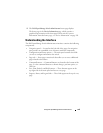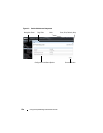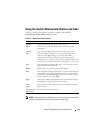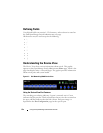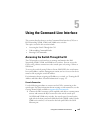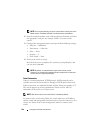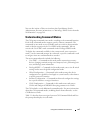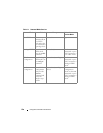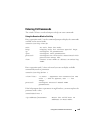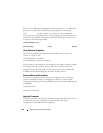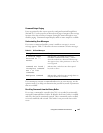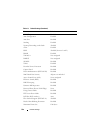
Using the Command-Line Interface 137
You can also initiate a Telnet session from the OpenManage Switch
Administrator. For more information, see "Initiating a Telnet Session from the
Web Interface" on page 288.
Understanding Command Modes
The CLI groups commands into modes according to the command function.
Each of the command modes supports specific software commands. The
commands in one mode are not available until you switch to that particular
mode, with the exception of the User EXEC mode commands. You can
execute the User EXEC mode commands in the Privileged EXEC mode.
To display the commands available in the current mode, enter a question
mark (?) at the command prompt. In each mode, a specific command is used
to navigate from one command mode to another.
The main command modes include the following:
• User EXEC — Commands in this mode permit connecting to remote
devices, changing terminal settings on a temporary basis, performing basic
tests, and listing system information.
• Privileged EXEC — Commands in this mode permit you to view all switch
settings and to enter the global configuration mode.
• Global Configuration — Commands in this mode manage the device
configuration on a global level and apply to system features, rather than to
a specific protocol or interface.
• Interface Configuration — Commands in this mode configure the settings
for a specific interface or range of interfaces.
• VLAN Configuration — Commands in this mode create and remove
VLANs and configure IGMP/MLD Snooping parameters for VLANs.
The CLI includes several additional command modes. For more information
about the CLI command modes, including details about all modes, see the
CLI Reference Guide
.
Table 5-1 describes how to navigate between CLI Command Mode and lists
the prompt that displays in each mode.



